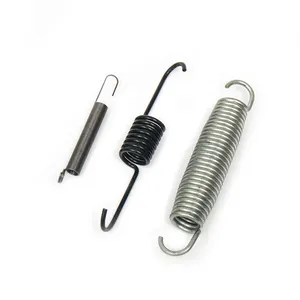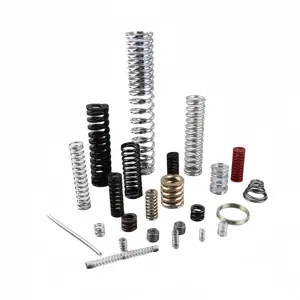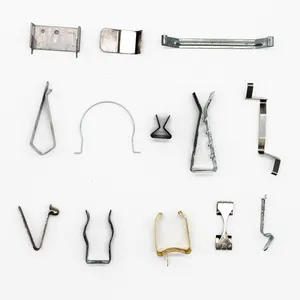
Customized Stainless Steel Coil Spring Wire Forming Bending Springs For Mini Juicer Extension Load Type


Wholesale Micro 304 5mm Stainless Steel Spring Metal Small Pressure Spring Custom Cylindrical Flat Wire Coils Compression Spring














Flat spring wire stands as a fundamental component in numerous industrial applications, distinguished by its unique flat profile. This specialized form of wire is crafted to meet the demands of precision and durability, making it an indispensable material in various manufacturing processes.
The composition of flat spring wire typically involves high-carbon steel or stainless steel, materials known for their strength and resilience. The flat cross-section enhances the material's flexibility while maintaining its form, a critical feature for components requiring repeated flexing. The inherent properties of flat spring wire, such as resistance to fatigue and high tensile strength, make it suitable for enduring the rigors of dynamic environments.
Flat spring wire is integral to the manufacturing of springs and washers, where precise force distribution is essential. Its applications extend to automotive industries for the creation of suspension components, and it is also utilized in the production of clips and fasteners, where secure and reliable holding is paramount. In electronics, flat spring wire is employed in connectors and terminals, capitalizing on its excellent conductivity and resilience to deformation.
The manufacturing process of flat spring wire involves a series of steps to ensure its performance. Starting with cold rolling, the wire is then subjected to heat treatments to achieve the desired mechanical properties. Advanced techniques such as stress-relieving and shot peening are often employed to enhance the wire's fatigue life, crucial for its longevity in spring applications.
One of the primary advantages of flat spring wire is its ability to withstand high stress and repeated cycles without failure, a trait essential for springs and other flexing components. Its flat surface allows for better contact in assemblies, distributing loads evenly and reducing wear. Additionally, the wire's resistance to corrosion, particularly in stainless steel variants, extends its usability in harsh environments.
Selecting the appropriate flat spring wire for a specific application requires consideration of factors such as material type, thickness, width, and temper. The environment in which the wire will operate also plays a crucial role, dictating the need for additional properties like temperature resistance or non-magnetic characteristics.
Incorporating flat spring wire into various industrial components underscores its versatility and efficiency. As a key material in the realm of precision manufacturing, it continues to support innovations across multiple sectors.